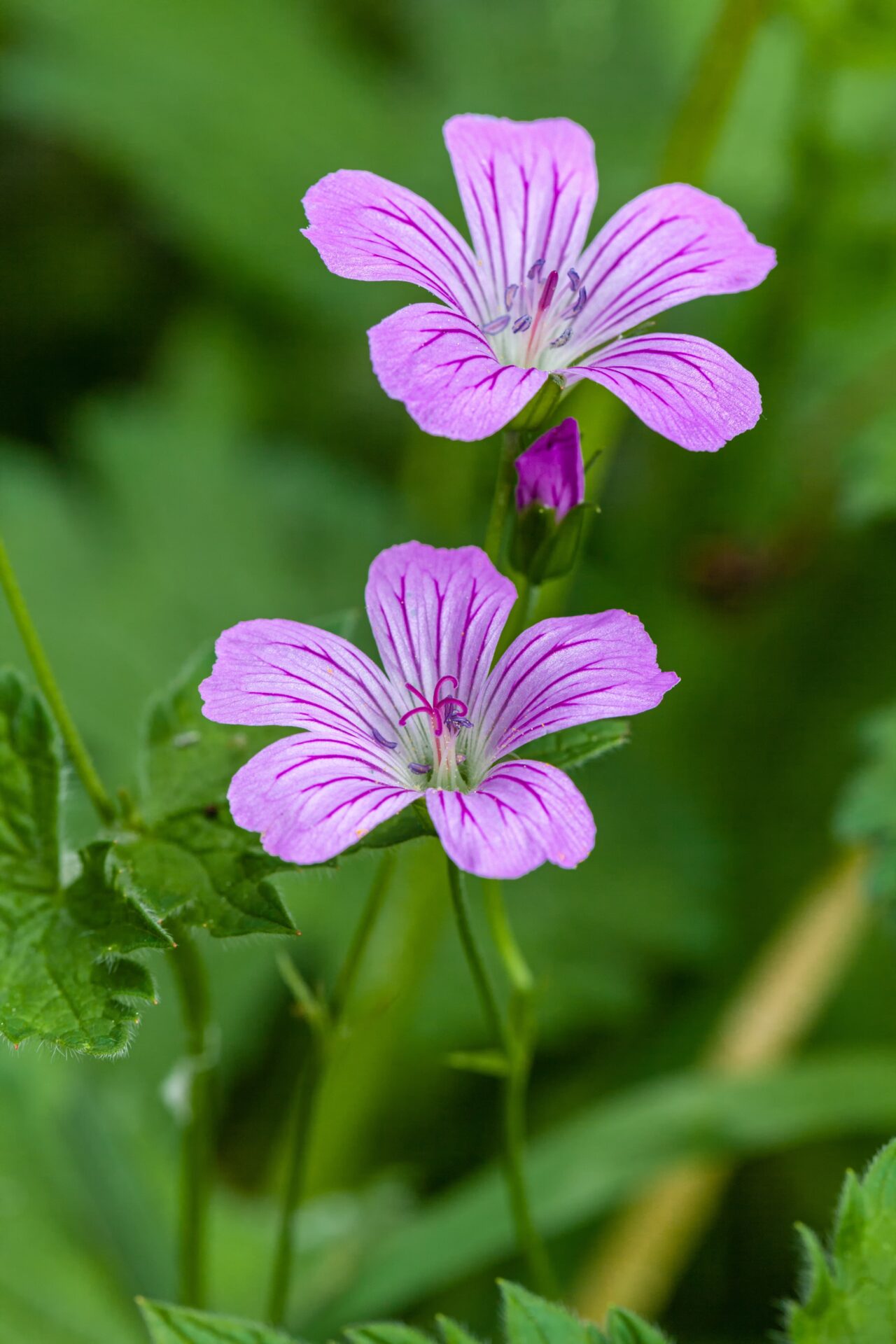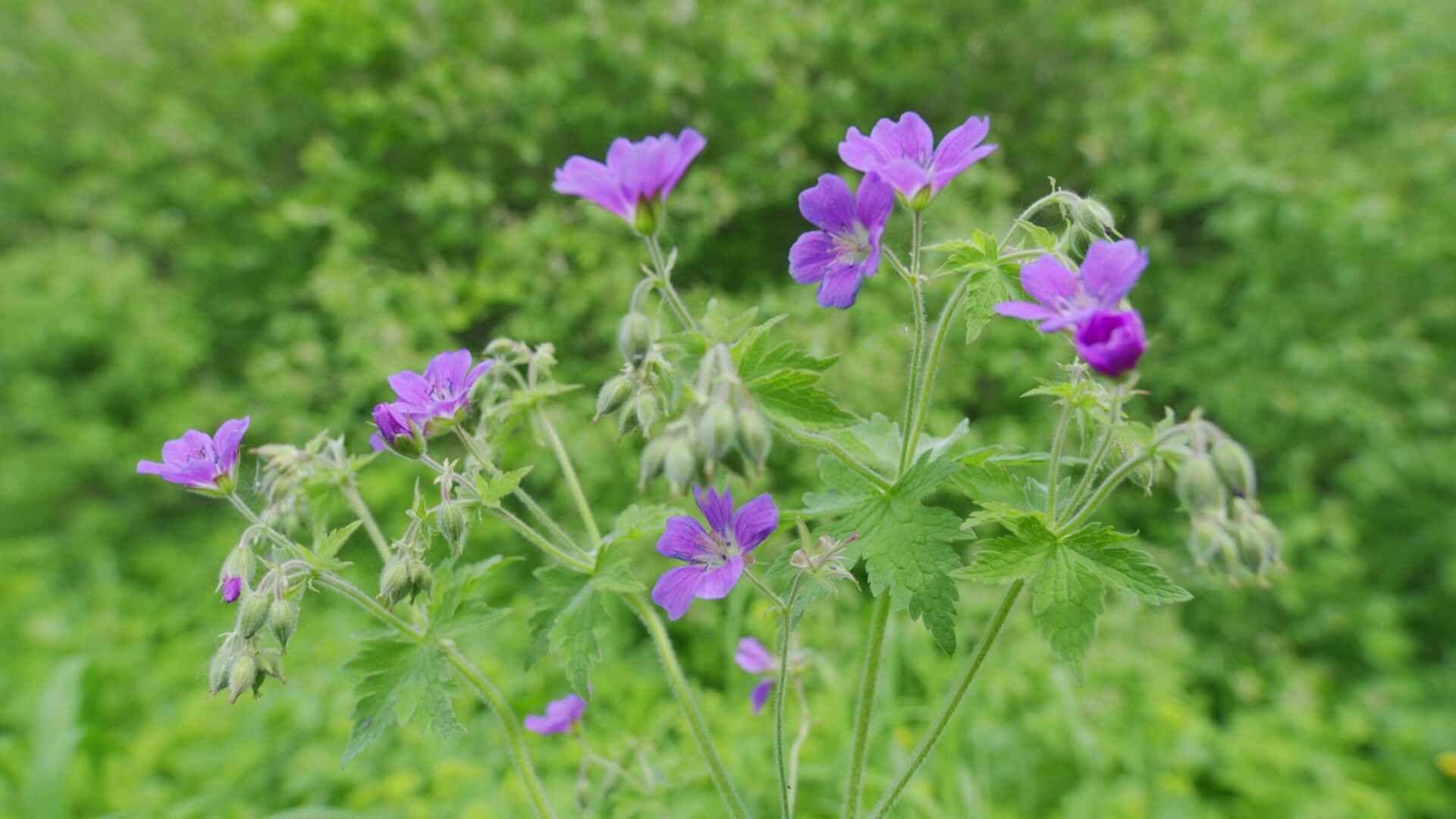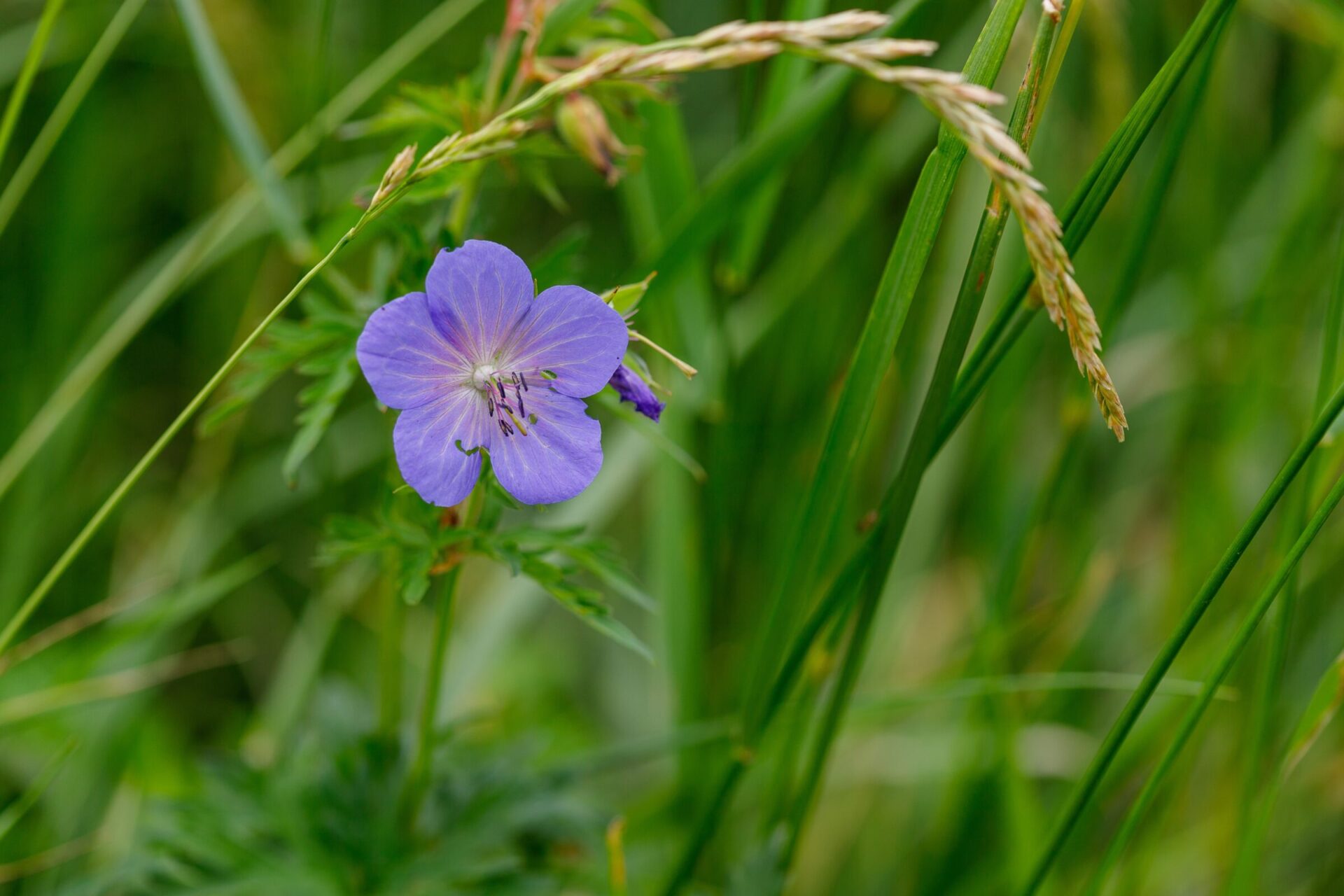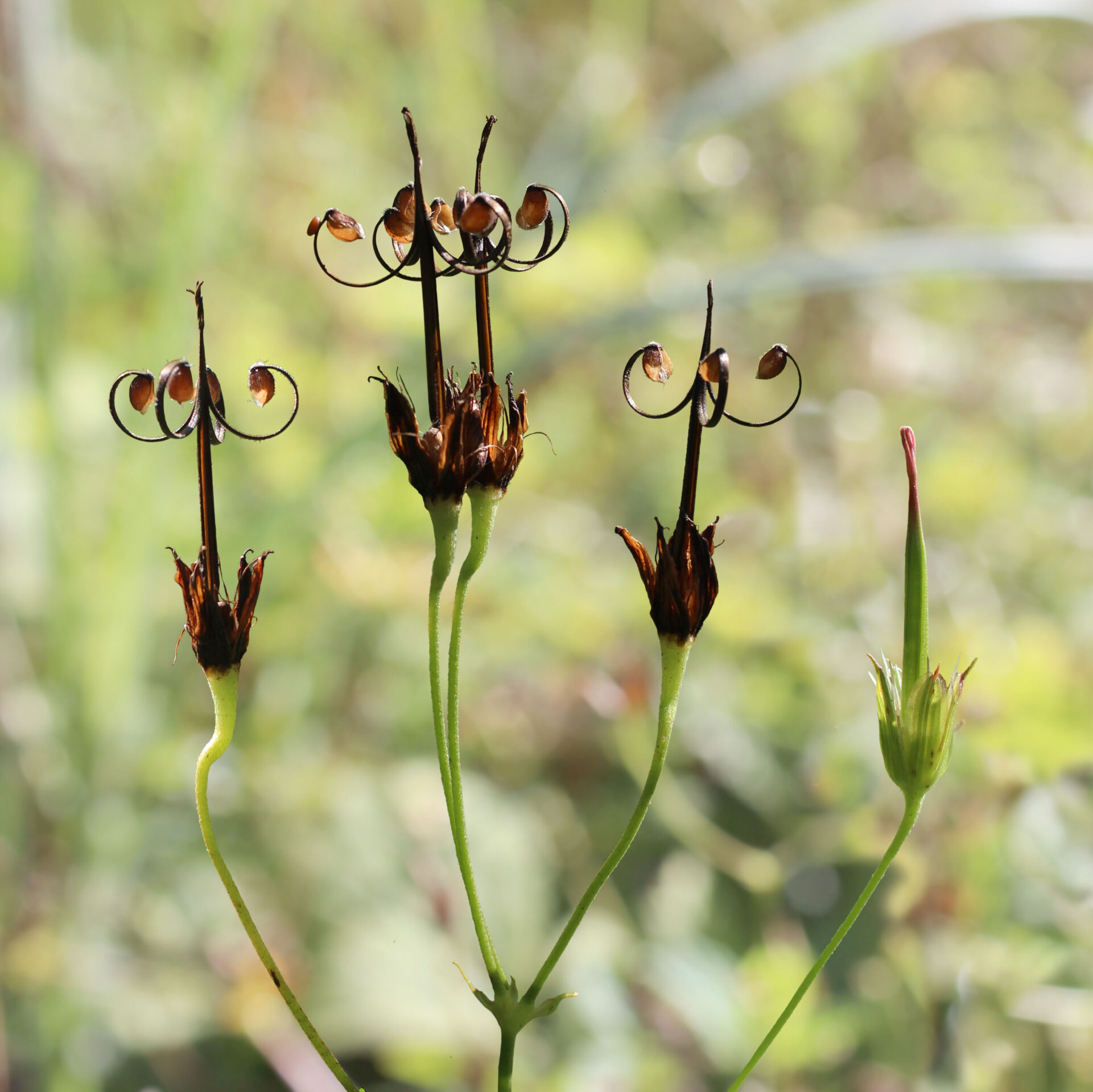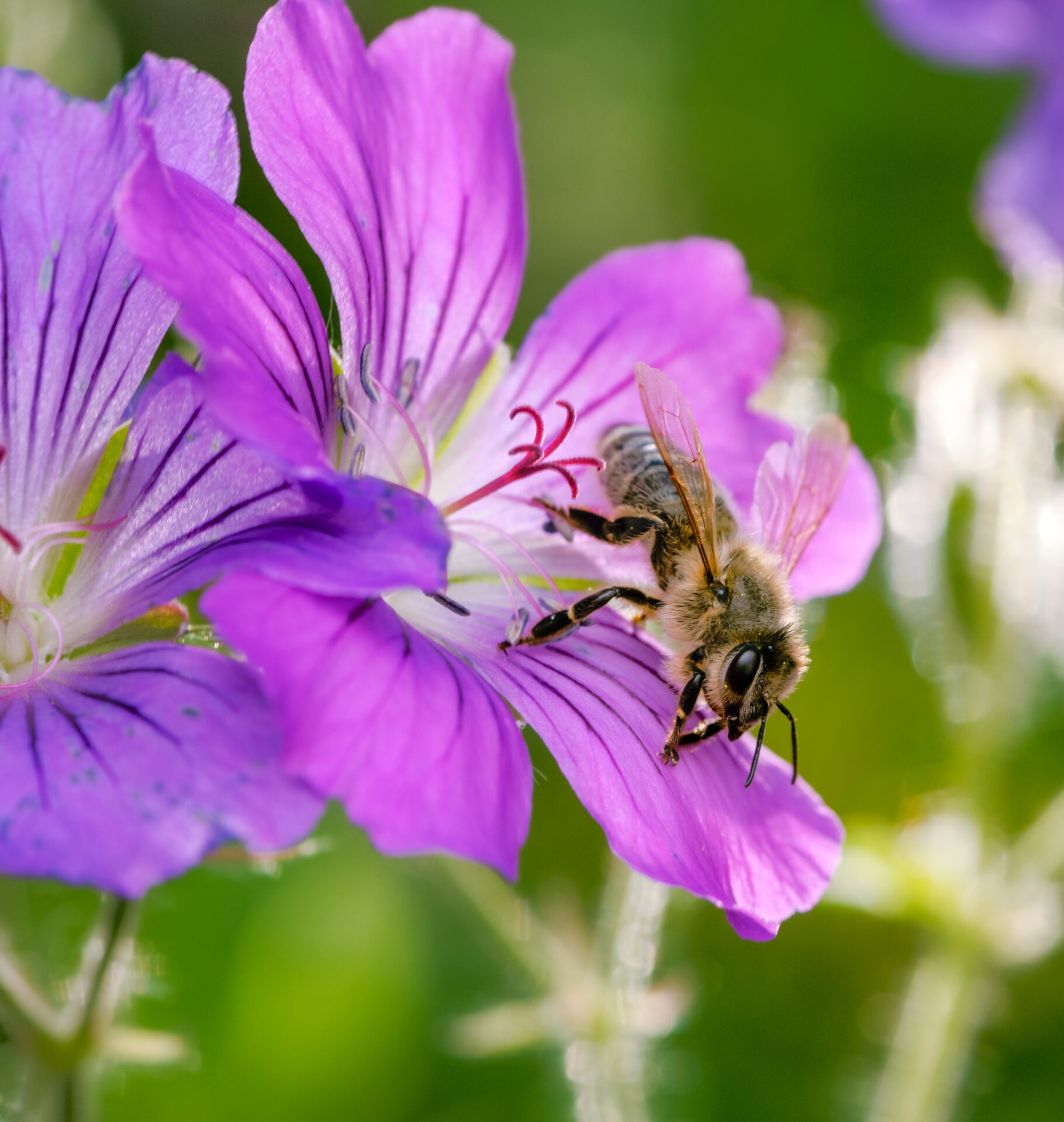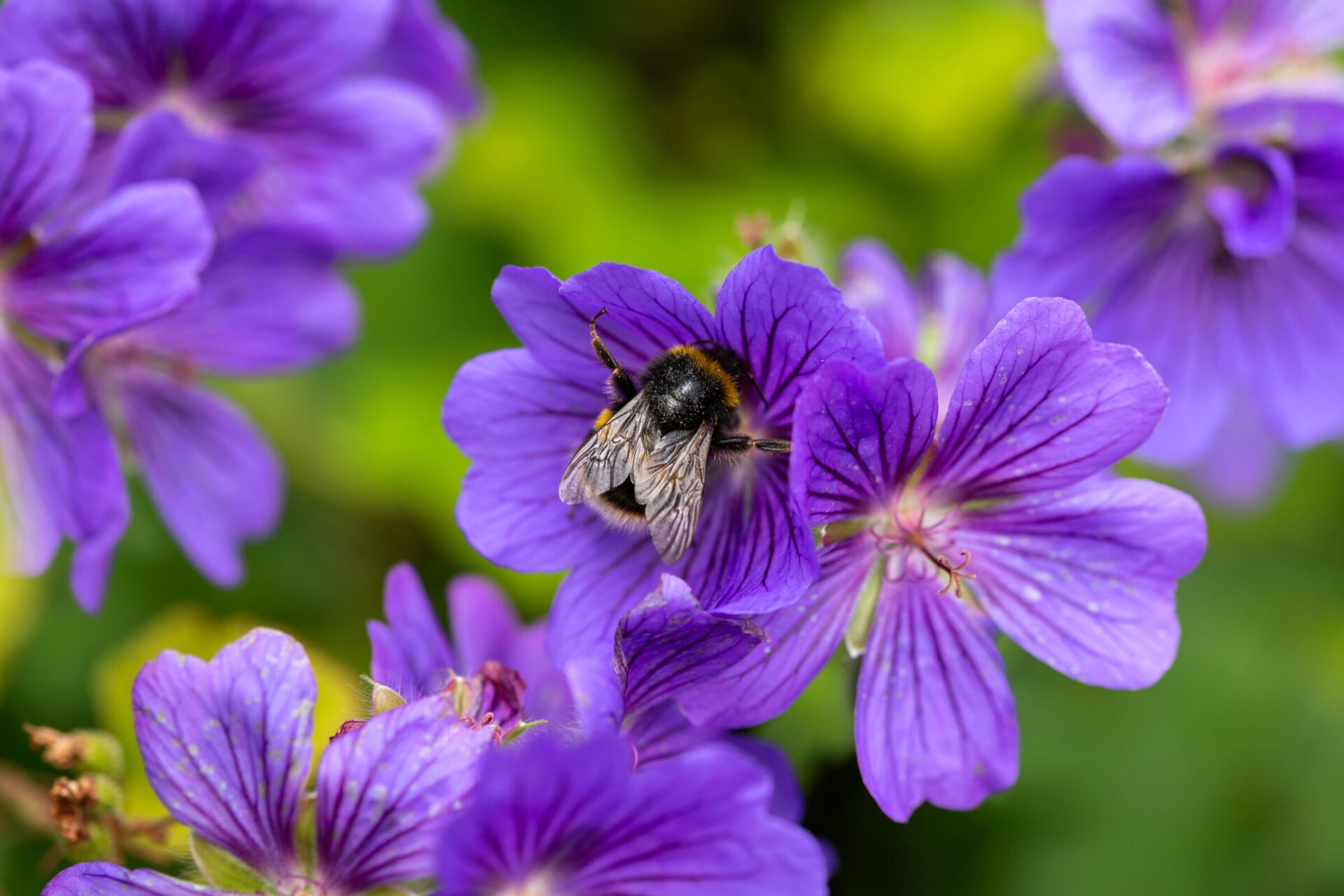The terms “cransbill” and “wild geranium” refer to the same plant, Geranium maculatum.
The common name “cranesbill” comes from the plant’s distinctive seed capsule, which resembles a crane’s bill.
Wild geranium is also known by other names like spotted geranium, wood geranium, and alum root.
Light Needs
Wild geranium thrives in partial shade and is happy in dappled light, making it perfect for woodland edges, under trees, or along shady borders.
Soil Needs
Wild geranium prefers moist, well-drained soil but is adaptable to a range of soil types. Once established, it can handle drier conditions quite well.
Size
Wild geranium typically grows about 1 to 2 feet tall and wide, making it a tidy yet impactful addition to your garden.
Spacing
Plant wild geraniums about 12 to 18 inches apart to allow for healthy growth and spreading. These plants will gently fill in gaps over time without becoming invasive.
Zone
Wild geranium is hardy in USDA zones 3-8, making it a versatile choice for many climates. Its adaptability and resilience make it a reliable performer year after year.
Nectar Quality
Wild geranium’s nectar is an excellent food source for native bees and butterflies, providing nourishment throughout its spring and early summer bloom time.
